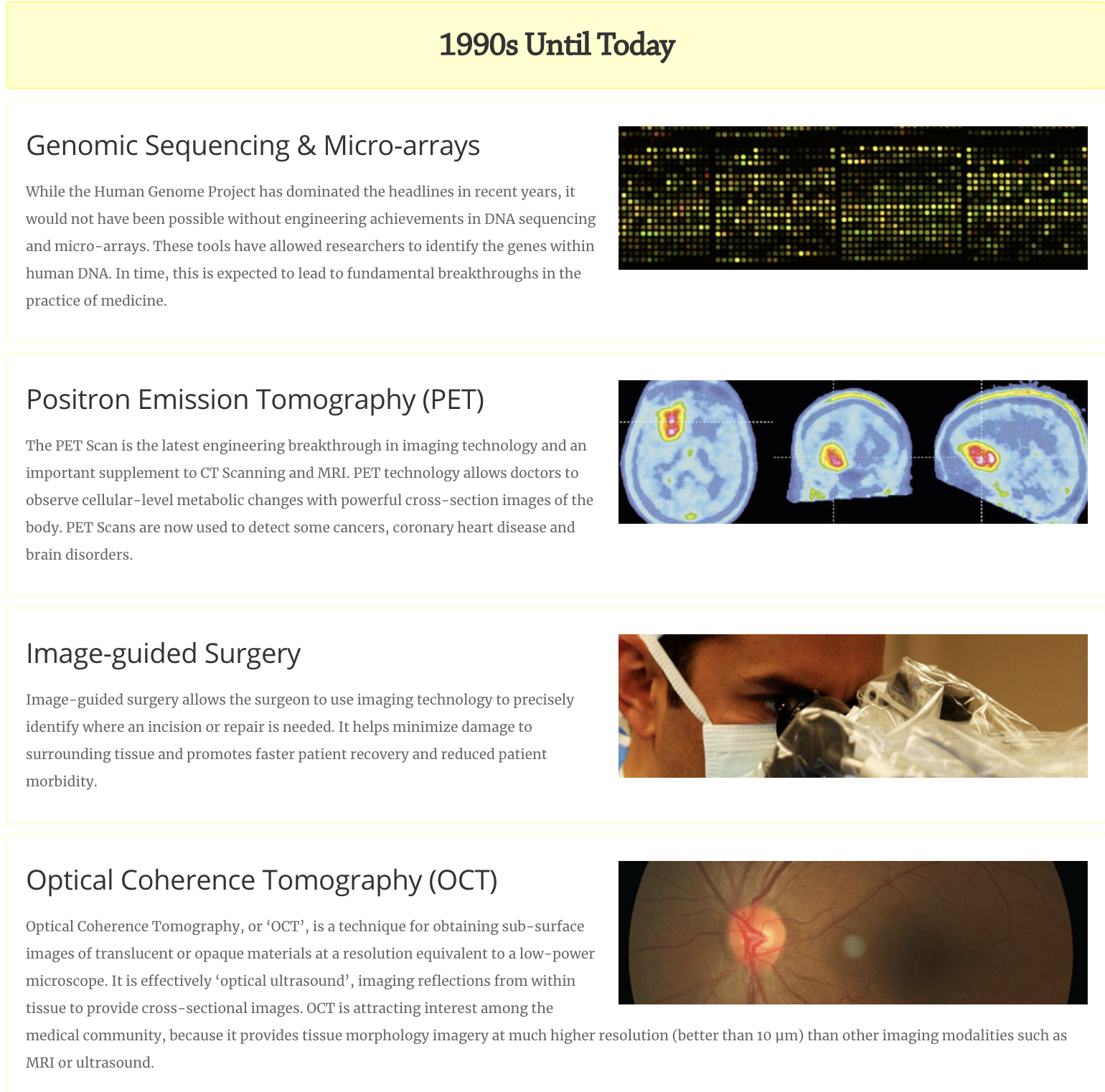The field of bioengineering is in its infancy – it is the only engineering discipline that developed post WWII. There is much room for growth and advancement within the field, which poses exciting opportunities for students looking toward bioengineering careers. Medical and biological engineers today are carving-out their own path and are working to solve society’s most vexing issues. As never before, advances in bioengineering hold tremendous promise in tackling some of the grand challenges facing the US and the world. A look back at the development of the field of bioengineering reveals astounding achievements and remarkable advances.
The second half of the 20th century paved the way for the modern era of bioengineering yet to come. Major strides in medical devices were seen. Willem Kolff, Ph.D. conducted research and experiments that led to the advent of kidney dialysis in the late 1940’s. Charles A. Hufnagel, M.D. invented the first artificial heart valve, which was successfully implanted in 1952. In 1953, Philadelphia surgeon John H. Gibbon, Jr. performed the first successful human heart surgery assisted by a heart-lung machine. Then in 1958, the first external cardiac pacemaker was successfully used. By the late 1960’s, the first biomedical engineering departments were formed at the University of Virginia, Case Western Reserve University, Johns Hopkins University, and Duke University. These institutions have remained active in educating students and conducting cutting-edge research today.
At the same time, advances in what we knew about the building blocks of life were rapidly developing, spurring a ‘biological revolution.’ Cell culture, or the way cells are grown in the lab, became critical in the development of polio vaccines in the 1940’s and 1950’s. The discovery that DNA is a double helix in the 1950’s was invaluable to the medical and biological sciences. The beginning of the modern era of bioengineering was marked by the introduction of recombinant DNA technology (DNA produced artificially in the lab) in the 1970’s. Towards the end of the 20th century, significant advances in technology spurred the development of the Human Genome Project and a revolution in biotechnology innovation around the world.
The past three decades continued to solidify bioengineering as a discipline uniquely positioned to advance human health at the cutting edge of medical technology. Medical imaging technology soared. Stem cell technology emerged. Biological and tissue engineered skin substitutes were developed. Major trends in public health including rising health care costs, re-emerging diseases, and an aging population demanded a field equipped with tools to tackle these problems. For the future, individuals educated with an integration of engineering with biology will be able to contribute not only to advances in medicine, but also to other society problems such as energy, the environment, and food.
The Whitaker Foundation played a key role in supporting the growth of the field, contributing more than $700 million to schools and universities to develop their own biomedical engineering programs between 1975 and 2006. The Wallace H. Coulter Foundation, which launched in 1998, immensely supported the biomedical engineering community for nearly two decades. In addition, the American Institute for Medical and Biological Engineering (AIMBE) was established in 1991 as an umbrella organization to address the issues of public policy and professional education that comprise the medical and biological engineering sciences. Later, in 2000, the National Institute of Biomedical Imaging and Bioengineering was established as a home for bioengineering at the National Institutes of Health.

